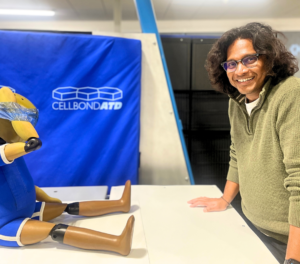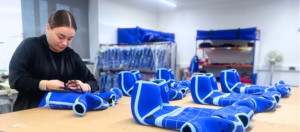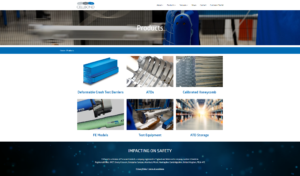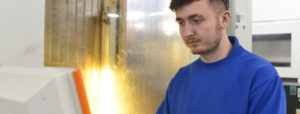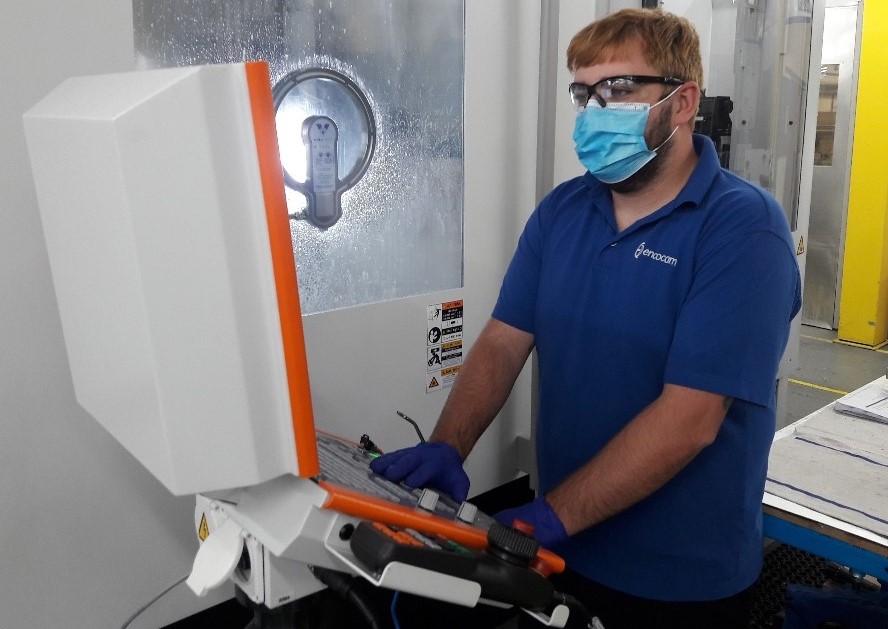
Motivating employees: Encocam’s response to COVID-19
22 May 2020Dr Mike Ashmead, Founder of Encocam, talks to the CBI about how we have been motivating employees during the COVID-19 pandemic. Read the full article on the CBI website.
What challenges were you trying to address?
With the virus spreading and social distancing measures being announced by government, we found we were juggling a complex range of issues. These included maintaining production in a safe way so that we could continue to support customers with their supply chain, understanding customer needs and requirements – who was open and accepting deliveries and what support they needed, understanding the impact on the business’ cash flow and how we manage that and look to the long term – we need to have a business when this is over, supporting our team and their complex health and wellbeing needs, including meeting the requirements for social distancing throughout the whole business and managing employee concerns, both physical and mental, in a really challenging time.
What goals or outcomes did Encocam want to achieve?
We set about coordinating a business response, with three key goals in mind:
- We wanted employees to know we were taking this situation seriously, that we understood their concerns, their particular situation and could adapt to that
- We wanted to maintain production so that customers knew we understood their needs and could continue to deliver to them
- We also wanted both customers and employees to know that we were working hard to protect the business for the long term – to ensure we survive this crisis so that employees have a job to come back to and customers have a reliable supplier they can depend on.
What was your solution?
Like many businesses, our overall solution contained three major workstreams:
Protecting our employees’ wellbeing – We promoted hand washing, good hygiene and creating physical space around the business. We moved as many as possible to work from home to minimise unnecessary travel, contact and also give those with specific health concerns assurance. We made sure that those with underlying health conditions could self-isolate at home – if they could work then we supported that too. We put measures in place to ensure social distancing in the workplace – from production through to the offices and the canteens.
Embracing new ways of working – We have introduced software to support better communication while people are working remotely, from video conferencing to ‘chat’ systems to make keeping in touch easy.
Maintaining the business for the long-term – We have applied for a grant to help us pay for an investment to increase efficiency in our production systems. We have also furloughed some staff – we have decided to pay full pay to those being furloughed so that they are not financially disadvantaged.
How did you roll out your approach?
Employees really are at the heart of the business – and at the start of the pandemic, it was clear to see that many members of staff had very real anxieties – some financial, some about childcare arrangements, some about safety. Our approach to that was always to open up individual conversations – to understand what employees’ concerns were and have discussions about how we could work together to resolve them. In addition to that human approach, we also implemented a communications plan to support our response.
Our communications plan was divided into two broad areas:
Communicating with and supporting employees
- We introduced a ‘frequently asked questions’ bulletin including information on what we’re doing as an employer, but also articles on how to make home working work, things to do at the weekend, etc. Our objective was to keep people informed, but also to embrace the human side of the situation and support people emotionally as well. The team have also been encouraged to raise their questions with us – and we make sure we answer them all in the FAQs bulletin
- We brought out a special edition of our staff magazine – Encovision – as a response to the virus, with health advice amongst other things
- Resources are available on an employee portal on our website so that everyone can access them – furloughed, home working or still on site
- We call everyone who is not in the office – whether they are home working, furloughed or sick – to keep in touch and let them know we are there for them.
- We have inspired employees to think about the long-term future of the business by coming up with ideas for new products; more than 10% have come up with a myriad of great ideas and we will be running virtual brainstorming sessions to explore those
- We have paid a bonus to those directly working to maintain production – we wanted the team to know how much we value their support to keep production going and recognise their roles as key workers at the heart of the business.
Communicating with customers
- We have kept our website up-to-date with the latest information, highlighting that we are open and here to help our customers
- We have also used social channels to show that we are working and how we are supporting customers differently in order to keep people safe
- We are phoning customers to check that they are open to receive deliveries and asking how we can support them.
What have the results been?
We’ve had positive feedback from employees who have appreciated our personal approach – helping us build trust and strengthen our relationships. Employees have appreciated where we were quick to take action, they are engaged and we’ve had some great suggestions for future products.




